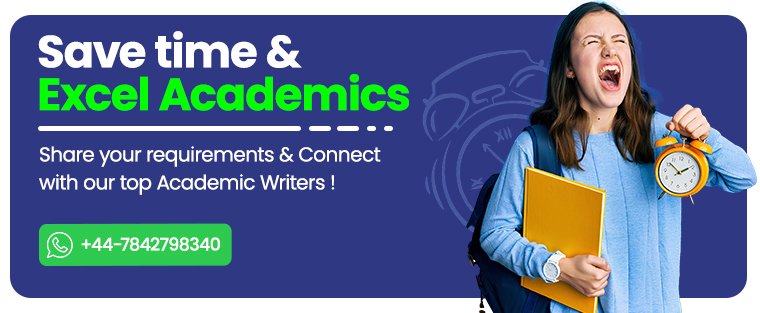Motivation Research and Classroom Practice
How does motivation research inform classroom practice?
Motivation is a psychological process that drives people to behave in a certain way (Long 2000). Motivation has consequences and as a result it has become highly valued (Deci and Ryan 2000). The stronger the motivation, the better the consequences because stronger motivation allows humans to get more deeply engaged in an activity cognitively, behaviourally, and affectively. In the field of education, Wentzel and Wigfield (2007) note that motivation declines as children move up the school years: children start school years with excitement and positivity about future success but this decline as they grow older. For this reason, it is important for teachers to motivate students in upper school years in order to make sure they remain positive about their success.

Teachers should adopt intervention targeting education as opposed to interventions targeting specific cognitive ability since motivation affects both academic results and social outcomes. According to Wigfield et al. (2006), motivation helps students to achieve outcomes even when their cognitive abilities are controlled. However, it is worth noting that teachers can impact students’ motivation either positively or negatively. To ensure students are positively motivated, teachers should place emphasis on the importance of hard work, persistence, and improvement as opposed to emphasising ability (Dweck 2002). On the other hand, Ames (1992) writes that adopting mastery goal orientation would positively influence students’ motivation.
The goal orientation theory was developed with an aim of explaining motivation in the classroom environment (Ames 1992). The theory focuses on the belief that students have about their success or failure in academic tasks. These attributions significantly affect the way students approach and respond to academic tasks. According to Weiner (1985), the goal orientation theory relates to the attribution theory in that students attribute success to efforts and focus of enhancing their performance (mastery-orientation) as opposed to focusing on their ability and defining success by social comparison (performance-orientation).
The basic idea of mastery goal orientation is that effort leads to success and a sense of mastery, and this attributional belief establishes and maintains achievement directed behaviour among students (Ames 1992). Mastery goal orientation influences students to develop new skills, try to understand their work, improve their level of competence, and to achieve a sense of mastery depending on the standards one has set for self. From this orientation, students associate success with effort while failure is associated with inadequate effort.
The central focus of performance goal orientation is on individual ability and self-worth, which drives students to do better than others and surpass the normative-based standards (Ames 1992). This implies that learning is a means to achieve a goal and therefore students tend to exert little effort. In addition, students tend to avoid challenging tasks that minimise their chances of outperforming others. When one fails, they negatively judge themselves, which can be associated with negative affect. Performance-oriented students tend to use short-term learning strategies in order to promote their ability.
Performance goals orientation is associated with short-term memory while mastery-goal orientation leads to long-term gains (Murayama and Elliot 2011). Mastery-oriented students are intrinsically motivated which helps them set future goals such as family-, career-, and society-oriented. On the other hand, performance-oriented students have fame and wealth as their future goals (Qi Lee et al. 2010). There are various ways teachers can apply the goal orientation theory to shape the behaviour of students. Teachers should ensure that the learning tasks are challenging, which gives students a sense of control over the learning process thus they are able to tap on their interests over time (Malone and Lepper 1987). In addition, the learning tasks should be varied and diverse giving students minimal chances to make social comparisons and ensuring they will not set performance goals (Marshall and Weinstein 1984). Further, the learning tasks should be presented as specific short-term goals, which will help students believe the tasks are attainable thus put in reasonable effort (Schunk 1989). Teachers should also involve students in decision-making in the classroom (Ames 1992): autonomy supporting teachers give responsibility to students by allowing them to participate in classroom activities, which intrinsically motivates students. On the other hand, controlling teachers use external inducements such as rewards to get students engaged in classroom activities, which influences students to adopt performance-oriented goals.

In evaluation, teacher should avoid evaluation methods that allow students to compare their performance with that of their peers. This implies that teachers should not use evaluation methods that give students marks that relate to age-expected grading system, announce highest and lowest marks, or that allows parents to interpret child’s success or failure based on relative performance. At all times, teachers should ensure evaluation is focussed on self-improvement, which will always lead to better performance (Graham and Golan 1991). Following achievement, the way a teacher praises and gives feedback affects goal orientation. When teachers praise for intelligence, students end up thinking that ability is fixed thus they avoid challenging tasks and have lower confidence and motivation in hard tasks, which negatively affects performance (Kamins and Dwech 1999). As such, teachers should always aim at praising effort and strategy, which would motivate students to place more effort in future tasks. When teachers praise effort and strategy, students are more likely to spend more time attempting challenging tasks, which ultimately results in self-improvement, that is, a student is able to perform tasks he/she could not have initially completed. However, teacher should be careful not to give too difficult tasks that would discourage students; in all cases, the students should feel that the tasks are attainable if adequate effort is given to attempting these tasks. If teachers are to use performance-oriented goals in evaluation, they should ensure that students compare present performance with the previous, so that one is able to see the progress made as opposed to seeing how better he/she is compared to peers. In this way, students will be determined to improve so they become more competent, which relates to the mastery goal orientation.
Continue your journey with our comprehensive guide to Property Rights and Exclusion .
References
- Ames, C. (1992). Classroom: Goals, structures, and student motivation. Journal of Educational Psychology, 84, 261-271.
- Deci, E.L., Koestner, R., & Ryan, R.M. (1999). A meta-analytic review of experiments examining the effects of extrinsic rewards on intrinsic motivation. Psychological Bulletin, 125, 627-668.
- Frederickson, N., Miller, A., & Kline, A. (2008) Educational psychology: Topics in applied psychology. London: Hodder
- Kamins, M. L., & Dweck, C. S. (1999). Person versus process praise and criticism: Implications for contingent self-worth and coping. Developmental psychology, 35(3), 835.
- Lepper, R.M., Greene. D., Nisbett. E.R., (1973). Undermining children's Intrinsic interest with extrinsic reward: A test of the "overjustification" hypothesis. Journal of Personality and Social Psychology, 28, 129-137.
- Murayama, K., & Elliot, A.J. (2011). Achievement motivation and memory: Achievement goals differentially influence immediate and delayed remember–know recognition memory. Personality and Social Psychology Bulletin, 37(10), 1339-1348.
- Murayama, K., Matsumoto, M., Izuma, K., & Matsumoto, K. (2010). Neural basis of the undermining effect of monetary reward on intrinsic motivation. PNAS Proceedings of the National Academy of Sciences of the United States of America, 107(49), 20911-20916.
- Niemiec, C. P., & Ryan, R. M. (2009). Autonomy, competence, and relatedness in the classroom: Applying self-determination theory to educational practice. School Field, 7(2), 133-144.
- Ryan, R. M., & Deci, E. L. (2000). Self-determination theory and the facilitation of intrinsic motivation, social development, and well-being. American Psychologist, 55(1), 68-78.
- Schunk, D.H., 1989. Self-efficacy and achievement behaviors. Educational psychology review, 1(3), pp.173-208.
- Weiner, B. (1985). An attributional theory of achievement motivation and emotion. Psychological review, 92(4), 548.
- Wentzel, K. R., & Wigfield, A. (2007). Motivational interventions that work: Themes and remaining issues. Educational Psychologist, 42(4), 261-271
- 24/7 Customer Support
- 100% Customer Satisfaction
- No Privacy Violation
- Quick Services
- Subject Experts



